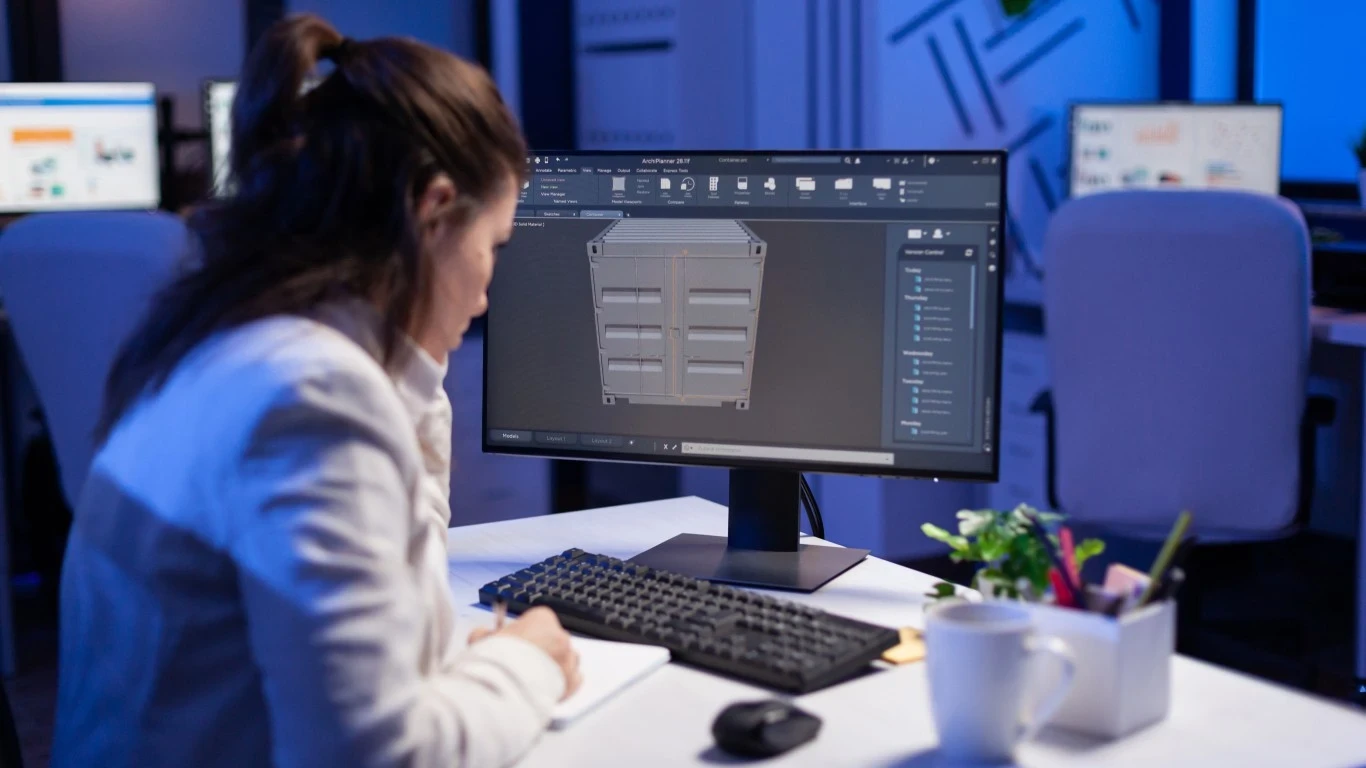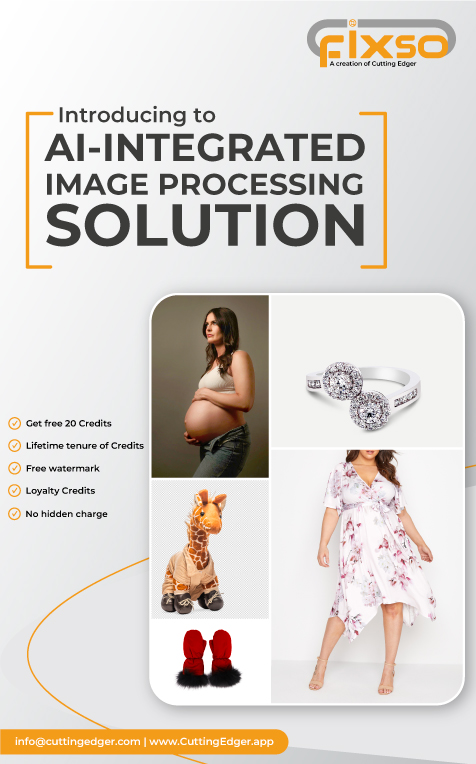Exploring Top 5 3D Product Modeling and Rendering Software (2023)
by Imam Hossain / Last Update: November 02, 2023
In 3D product modeling, the choice of software is the compass that guides your creative journey. Whether you're an industrial designer, a product developer, or a visual effects enthusiast, the right software can transform your ideas into photorealistic 3D models. In this article, we'll be your guide as we explore the top 5 3D modeling and rendering software options available. Get ready to unravel the tools that can turn your design ideas into reality.
📋Short Note: If you are new to 3D Product Modeling and Rendering, be sure to read our in depth blog on “Introduction to 3D Product Modeling and Rendering”
Criteria for Selecting 3D Product Modeling and Rendering Software
Considering 3D product modeling and rendering, it's crucial to choose the right software that aligns with your project requirements and goals. To help you make an informed decision, consider the following key criteria:
1. Project Requirements: Before diving into software options, define your project's specific needs. Are you creating 3D models for product design, architecture, or visual effects? Identifying your project's scope and objectives will guide you in selecting the software best suited for the task.
2. Compatibility with Your Hardware: Ensure that the software you choose is compatible with your computer's hardware specifications. Some 3D modeling applications may demand significant processing power and memory, so it's essential to verify that your system can handle the software's requirements.
3. Learning Curve and User-Friendliness: Evaluate the software's learning curve. Some options are more user-friendly and intuitive, making them ideal for beginners, while others offer advanced features suitable for experienced users. Consider your expertise level and the resources available for learning.
4. Pricing and Licensing Options: Budget considerations are crucial. Explore the pricing and licensing options of the software. Some may offer free open-source solutions, while others require subscription fees or one-time purchases. Weigh the costs against the features and benefits offered.
By carefully assessing these criteria, you can select the 3D modeling and rendering software that best aligns with your project and your skill level.
The Top 5 3D Product Modeling and Rendering Software Options
Now that we've established the essential criteria for selecting 3D modeling and rendering software, it's time to dive into the top 5 options that stand out in the field. Each of these software solutions brings a unique set of features and advantages to the table, catering to a variety of design and creative needs. Let's explore these software options in detail:
SketchUp: SketchUp is a 3D modeling software that is known for its ease of use and intuitive interface. It is a good option for beginners and users who need to create simple to complex 3D models quickly and easily. SketchUp offers a variety of features, including:
- Push-pull tools for creating and editing basic shapes
- Extrude and follow me tools for creating more complex shapes
- Texture and material libraries for adding realism to models
- Layering and grouping features for organizing models
- Rendering capabilities for creating photorealistic images and animations
3ds Max: Autodesk 3ds Max is a powerful and versatile 3D modeling and rendering software that is used by professionals in a wide range of industries. It offers a comprehensive set of tools for creating high-quality 3D models, materials, textures, and lighting. Some of the key features of 3ds Max include:
- A variety of modeling tools, including polygonal modeling, NURBS modeling, and spline modeling
- A powerful material and texture editor
- A global illumination system for realistic lighting
- A variety of rendering engines for producing high-quality images and animations
Blender: Blender is a free and open-source 3D modeling and rendering software that has become increasingly popular in recent years. It offers a wide range of features, including 3D modeling, sculpting, texturing, rigging, animation, simulation, and rendering. Some of the key features of Blender include:
- A variety of modeling tools, including polygonal modeling, NURBS modeling, and sculpting
- A powerful node-based material and texture editor
- A global illumination system for realistic lighting
- A variety of rendering engines for producing high-quality images and animations
SolidWorks: SolidWorks is a professional 3D modeling and CAD software that is used by engineers and designers in a wide range of industries. It offers a variety of features for creating and editing complex 3D models, as well as for generating engineering drawings and other documentation. Some of the key features of SolidWorks include:
- A variety of modeling tools, including solid modeling, surface modeling, and sheet metal modeling
- A powerful assembly environment for creating complex assemblies
- A drawing generator for generating engineering drawings
- A variety of simulation tools for analyzing the performance of 3D models
CAD Pro Furniture Design: CAD Pro Furniture Design is a specialized 3D modeling software for furniture designers and manufacturers. It offers a variety of features for creating and editing 3D furniture models, as well as for generating production drawings and other documentation. Some of the key features of CAD Pro Furniture Design include:
- A library of pre-made furniture components
- Tools for creating custom furniture components
- Tools for generating production drawings and other documentation
- Real-time rendering capabilities for previewing furniture designs
Pros and cons
SketchUp:
- Pros: Easy to use, intuitive interface, wide range of features, affordable pricing
- Cons: Not as powerful as other 3D modeling software, limited rendering capabilities
3ds Max:
- Pros: Powerful and versatile, comprehensive set of features, high-quality rendering capabilities
- Cons: Steep learning curve, expensive
Blender:
- Pros: Free and open-source, wide range of features, high-quality rendering capabilities
- Cons: Can be complex to learn, limited documentation
SolidWorks:
- Pros: Powerful and accurate, wide range of features, excellent documentation
- Cons: Expensive, steep learning curve
CAD Pro Furniture Design:
- Pros: Specialized for furniture design, easy to use, real-time rendering capabilities
- Cons: Limited features for general 3D modeling, expensive
Use Cases and Industries
SketchUp: SketchUp is a good option for a variety of use cases and industries, including:
- Architecture and interior design
- Product design
- Landscape design
- Video game development
- Film and animation
3ds Max: 3ds Max is a good option for a variety of use cases and industries, including:
- Architecture and interior design
- Product design
- Video game development
- Film and animation
- Engineering and manufacturing
Blender: Blender is a good option for a variety of use cases and industries, including:
- Architecture and interior design
- Product design
- Video game development
- Film and animation
- Scientific visualization
SolidWorks: SolidWorks is a good option for a variety of use cases and industries, including:
- Engineering and manufacturing
- Product design
- Architecture and construction
- Aerospace and defense
Side by Side Comparison of these 3D Product Modeling and Rendering Software
Let's break down the features and attributes of the top 5 3D modeling and rendering software options in a side-by-side comparison. This table provides a quick overview of each software's strengths and characteristics:
|
Software |
Project Types |
Learning Curve |
Hardware Compatibility |
Pricing and Licensing |
|
SketchUp |
Architecture, Interior Design, Product Development |
Beginner-Friendly |
Moderate System Requirements |
Free (Basic), Subscription Options |
|
3ds Max |
Game Design, Architectural Visualization, Animation |
Intermediate to Advanced |
High System Requirements |
|
|
Blender |
3D Modeling, Animation, Character Design |
Intermediate to Advanced |
Varied System Requirements |
Free and Open-Source |
|
SolidWorks |
Product Design, Engineering, Industrial Applications |
Intermediate to Advanced |
Moderate System Requirements |
|
|
CAD Pro Furniture Design |
Furniture Design, Real-Time Visualization |
Beginner-Friendly |
Moderate System Requirements |
This table offers a concise comparison of the software options, helping you make an informed decision based on your specific needs, skill level, and budget. The choice ultimately depends on the nature of your projects and your desired balance between features and costs.
Conclusion
In 3D product modeling and rendering, the software you choose is the bridge that connects your creative ideas to reality. Our exploration of the top 5 software options has shed light on the diverse tools available to designers, engineers, and artists, each with its own unique strengths and characteristics.
As you learn more, it's crucial to remember that the right software should align seamlessly with your project requirements, your familiarity with the tools, and your budget. Whether you're designing stunning architectural visualizations, crafting intricate 3D models for product development, or bringing characters to life through animation, there's a software solution tailored for your needs.
SketchUp simplifies the creation of photorealistic 3D models, while 3ds Max empowers designers with innovative features. Blender streamlines the 3D modeling process and is available as an open-source solution. SolidWorks is your go-to for versatile 3D design, and CAD Pro Furniture Design enhances your modeling with real-time rendering.
In the ever-evolving landscape of 3D modeling and rendering, it's the harmony between your creative vision and the capabilities of these software tools that will take your projects to new heights. The journey from idea to a high-quality 3D model, from concept to reality, is paved with the choices you make.
As you continue your creative endeavors, remember that your choice of software is a pivotal one, and it can empower you to bring your design ideas to life, adding realism, elegance, and creativity to your work. Each software option in our exploration has the potential to turn your imagination into a vivid, tangible representation. The path is yours to pave, and these software tools are your trusted companions on your creative journey.
So, go ahead, choose your software wisely, let your creativity flourish, and turn your 3D design dreams into reality. Your next masterpiece is just a click away.
Article by
Delwar Hussain
Image Processing Expert, Photography Enthusiast, Blogger, COO at Cutting Edger
Over 18 years of experience in Graphic Design, Image Editing, 3D Modeling/Rendering and Digital Products, I have got opportunity to work with different local and multi-national companies, among of them GraphicPeople, Modern Herbal Group and British Broad Casting (BBC) can be highlighted. During my career I have worked with Coca-Cola, Turkish Airlines, Singapore British American Tobacco, Dell, Pfizer Pharmaceuticals, Indeed.com, International Hotel Group (IHG), Santander Bank, Quad Inc. Adidas, Nike, Dove etc. Having 18 years of experience and being a Co-Founder and COO of Cutting Edger is providing Post Production Image Editing, 3D Modeling and Rendering, Desktop Publishing and Digital Products like Web Design and Development, Software Development, etc.

